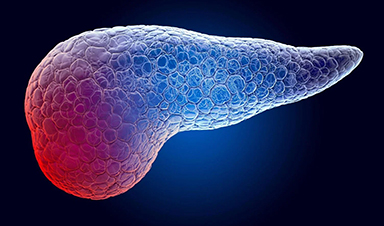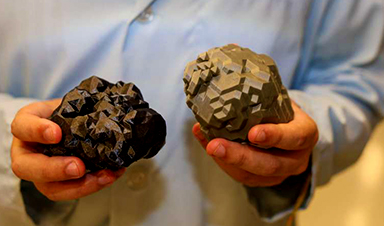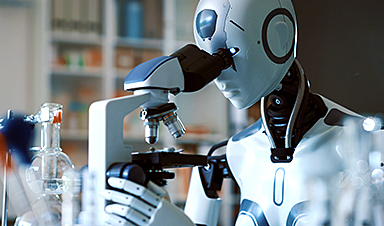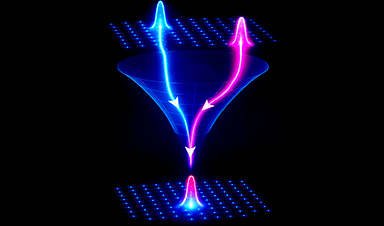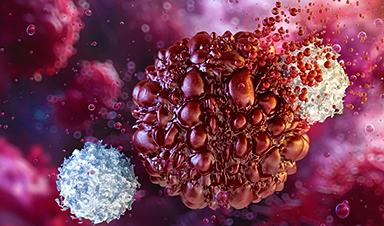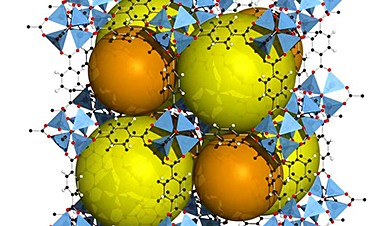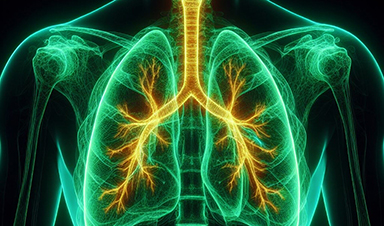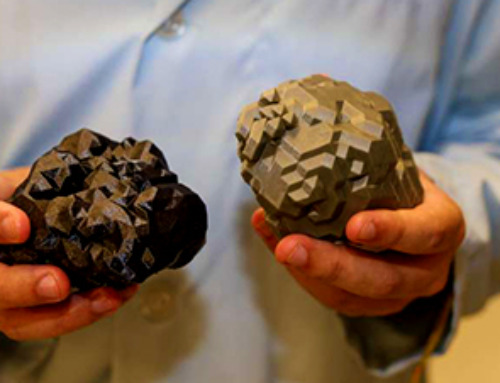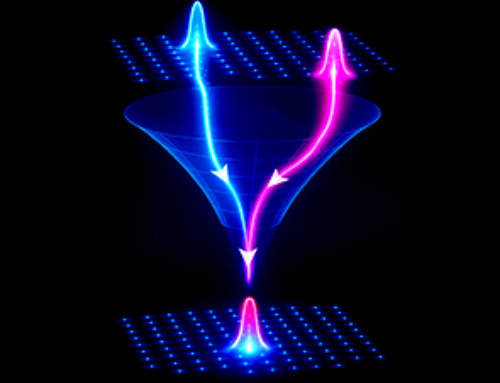Pancreatic cancer reprograms nerve cells to fuel its growth, but blocking these connections can shrink tumors and boost treatment effectiveness.
Pancreatic cancer is closely linked to the nervous system, according to researchers from the German Cancer Research Center (DKFZ) and the Heidelberg Institute for Stem Cell Technology and Experimental Medicine (HI-STEM). Their recent study, published in Nature, reveals that pancreatic tumors actively reprogram neurons to support their growth.
In experiments with mice, the researchers found that blocking nerve function not only slowed tumor progression but also made cancer cells more responsive to certain chemotherapy and immunotherapy treatments.
Over the past several years, scientists have observed interactions between cancer and the nervous system in nearly all studied tumor types, often finding that these interactions help tumors grow and survive. Pancreatic cancer, in particular, is surrounded by a dense network of nerves. However, only nerve fibers extend into the tumor, while the main bodies of the nerve cells remain in distant ganglia, the control centers of the peripheral nervous system. Until now, the exact molecular interactions between these nerves and cancer cells remained unclear.
Using a newly developed method, a team led by Andreas Trumpp, DKFZ, and HI-STEM, has now succeeded for the first time in molecularly examining the nerve cells in both healthy tissue and pancreatic cancer in mice.
Pancreatic cancer reprograms nerve cells
In pancreatic tumors, the nerves are extremely well-ramified and in contact with most of the tumor cells. Through the detailed molecular analysis of the individual neurons in the tumor, the researchers discovered that pancreatic cancer reprograms the gene activity of the nerves for its own benefit. The activity of many genes is increased or attenuated, resulting in a tumor-specific signature.
What is more, even after surgical removal of the primary tumor, the tumor nervous system retained its cancer-promoting properties: when the scientists reimplanted pancreatic cancer cells into the animals that had undergone surgery, the resulting secondary tumors were twice as large as those of mice that had been transplanted with pancreatic cancer cells for the first time.
In addition to their direct interaction with cancer cells, nerve cells influence in particular the fibroblasts of the tumor (CAF – cancer-associated fibroblasts), which make up a large part of the tumor mass. They are also stimulated to grow and contribute significantly to the suppression of the immune defense in the tumor environment.
Nerves cut – tumors shrink
When the sympathetic nerve connections to the pancreas were surgically severed or destroyed with special neurotoxins, tumor growth was significantly inhibited. At the same time, the activity of growth-promoting genes in the cancer cells as well as in the CAFs decreased. In the CAFs, the researchers observed a significant increase in pro-inflammatory gene activity after the nerves were destroyed.
“Apparently, the neuronal connections in pancreatic cancer suppress the pro-inflammatory activity of the fibroblasts, thereby inhibiting the cancer defense by immune cells,” explains Vera Thiel, the first author of the paper.
Severed nerves increase the effectiveness of immunotherapies
If the interruption of nerve connections apparently has an inflammatory effect, i.e. activates the immune system, this could increase the effectiveness of an immunotherapy with so-called checkpoint inhibitors (ICI). Drugs in this group metaphorically speaking release the “brakes” of the immune system. However, they cannot combat pancreatic carcinomas on their own: the tumors are considered immunologically “cold”, meaning the therapeutically important T-cells simply cannot reach the tumor.
When the researchers blocked the neural connection to the pancreatic tumor in a mouse model using a targeted neurotoxin, the tumor became sensitive to the checkpoint inhibitor nivolumab again and the tumor mass shrank to one-sixth of the mass in control animals. “By blocking the nerves, were able to convert an immunologically cold tumor into one that was sensitive to immunotherapy,” says Simon Renders, also a first author of the publication, summarizing the result.
Severed nerves plus chemotherapy: synergistic effect
The drug nab-paclitaxel is a component of standard chemotherapy for pancreatic cancer. In addition to inhibiting cell division, it also affects sensory nerves, which is why peripheral neuropathy is one of the known severe side effects of this agent.
Trumpp’s team showed that under repeated cycles of nab-paclitaxel, the sensory nerve fibers in the tumor decreased drastically. The tumor mass also decreased as expected. The effect on sensory nerves apparently seems to be part of the drug’s effectiveness against pancreatic cancer. However, the remaining nerve fibers retained their cancer-promoting gene activity even under treatment.
But what happens when the tumor is completely cut off from its neuronal connections? The researchers achieved this by treating the mice with nab-paclitaxel (to block sensory nerves) and a neurotoxin to switch off the sympathetic neurons. This combination had a synergistic effect and reduced the tumor mass by more than 90 percent.
“The result underscores that both types of nerve cells have functional relevance for tumor growth,” explains Vera Thiel. ”Complete blockade of the communication between nerves and tumor in combination with chemotherapy and/or immune checkpoint inhibitors is a promising approach for combating pancreatic cancer more effectively in the future. For example, it is conceivable to reduce the size of the tumors to such an extent that they subsequently become resectable, Trumpp summarizes. His team, together with doctors from Heidelberg University Hospital, is already planning early clinical trials to test this strategy in pancreatic cancer patients.
The Heidelberg Institute for Stem Cell Research and Experimental Medicine (HI-STEM) gGmbH was founded in 2008 as a public-private partnership between the DKFZ and the Dietmar Hopp Foundation and has been funded by the foundation for 15 years now.
Why research in mice is necessary for this research project
To investigate which different types of peripheral nerves influence the development of pancreatic cancer, the fully developed nervous system of an intact organism is essential. In addition, the aim of the work was to examine the interaction between the nervous system and the tumor as a potential target for new therapeutic approaches. In order to discover possible synergies with the body’s own defense system, the immune system with all its components is also needed. Both cannot be reproduced in cell or organ culture systems.
Reference: “Characterization of single neurons reprogrammed by pancreatic cancer” by Vera Thiel, Simon Renders, Jasper Panten, Nicolas Dross, Katharina Bauer, Daniel Azorin, Vanessa Henriques, Vanessa Vogel, Corinna Klein, Aino-Maija Leppä, Isabel Barriuso Ortega, Jonas Schwickert, Iordanis Ourailidis, Julian Mochayedi, Jan-Philipp Mallm, Carsten Müller-Tidow, Hannah Monyer, John Neoptolemos, Thilo Hackert, Oliver Stegle, Duncan T. Odom, Rienk Offringa, Albrecht Stenzinger, Frank Winkler, Martin Sprick and Andreas Trumpp, 17 February 2025, Nature.
DOI: 10.1038/s41586-025-08735-3
News
Nanoparticle blueprints reveal path to smarter medicines
Lipid nanoparticles (LNPs) are the delivery vehicles of modern medicine, carrying cancer drugs, gene therapies and vaccines into cells. Until recently, many scientists assumed that all LNPs followed more or less the same blueprint, [...]
How nanomedicine and AI are teaming up to tackle neurodegenerative diseases
When I first realized the scale of the challenge posed by neurodegenerative diseases, such as Alzheimer's, Parkinson's disease and amyotrophic lateral sclerosis (ALS), I felt simultaneously humbled and motivated. These disorders are not caused [...]
Self-Organizing Light Could Transform Computing and Communications
USC engineers have demonstrated a new kind of optical device that lets light organize its own route using the principles of thermodynamics. Instead of relying on switches or digital control, the light finds its own [...]
Groundbreaking New Way of Measuring Blood Pressure Could Save Thousands of Lives
A new method that improves the accuracy of interpreting blood pressure measurements taken at the ankle could be vital for individuals who are unable to have their blood pressure measured on the arm. A newly developed [...]
Scientist tackles key roadblock for AI in drug discovery
The drug development pipeline is a costly and lengthy process. Identifying high-quality "hit" compounds—those with high potency, selectivity, and favorable metabolic properties—at the earliest stages is important for reducing cost and accelerating the path [...]
Nanoplastics with environmental coatings can sneak past the skin’s defenses
Plastic is ubiquitous in the modern world, and it's notorious for taking a long time to completely break down in the environment - if it ever does. But even without breaking down completely, plastic [...]
Chernobyl scientists discover black fungus feeding on deadly radiation
It looks pretty sinister, but it might actually be incredibly helpful When reactor number four in Chernobyl exploded, it triggered the worst nuclear disaster in history, one which the surrounding area still has not [...]
Long COVID Is Taking A Silent Toll On Mental Health, Here’s What Experts Say
Months after recovering from COVID-19, many people continue to feel unwell. They speak of exhaustion that doesn’t fade, difficulty breathing, or an unsettling mental haze. What’s becoming increasingly clear is that recovery from the [...]
Study Delivers Cancer Drugs Directly to the Tumor Nucleus
A new peptide-based nanotube treatment sneaks chemo into drug-resistant cancer cells, providing a unique workaround to one of oncology’s toughest hurdles. CiQUS researchers have developed a novel molecular strategy that allows a chemotherapy drug to [...]
Scientists Begin $14.2 Million Project To Decode the Body’s “Hidden Sixth Sense”
An NIH-supported initiative seeks to unravel how the nervous system tracks and regulates the body’s internal organs. How does your brain recognize when it’s time to take a breath, when your blood pressure has [...]
Scientists Discover a New Form of Ice That Shouldn’t Exist
Researchers at the European XFEL and DESY are investigating unusual forms of ice that can exist at room temperature when subjected to extreme pressure. Ice comes in many forms, even when made of nothing but water [...]
Nobel-winning, tiny ‘sponge crystals’ with an astonishing amount of inner space
The 2025 Nobel Prize in chemistry was awarded to Richard Robson, Susumu Kitagawa and Omar Yaghi on Oct. 8, 2025, for the development of metal-organic frameworks, or MOFs, which are tunable crystal structures with extremely [...]
Harnessing Green-Synthesized Nanoparticles for Water Purification
A new review reveals how plant- and microbe-derived nanoparticles can power next-gen water disinfection, delivering cleaner, safer water without the environmental cost of traditional treatments. A recent review published in Nanomaterials highlights the potential of green-synthesized nanomaterials (GSNMs) in [...]
Brainstem damage found to be behind long-lasting effects of severe Covid-19
Damage to the brainstem - the brain's 'control center' - is behind long-lasting physical and psychiatric effects of severe Covid-19 infection, a study suggests. Using ultra-high-resolution scanners that can see the living brain in [...]
CT scan changes over one year predict outcomes in fibrotic lung disease
Researchers at National Jewish Health have shown that subtle increases in lung scarring, detected by an artificial intelligence-based tool on CT scans taken one year apart, are associated with disease progression and survival in [...]
AI Spots Hidden Signs of Disease Before Symptoms Appear
Researchers suggest that examining the inner workings of cells more closely could help physicians detect diseases earlier and more accurately match patients with effective therapies. Researchers at McGill University have created an artificial intelligence tool capable of uncovering [...]
